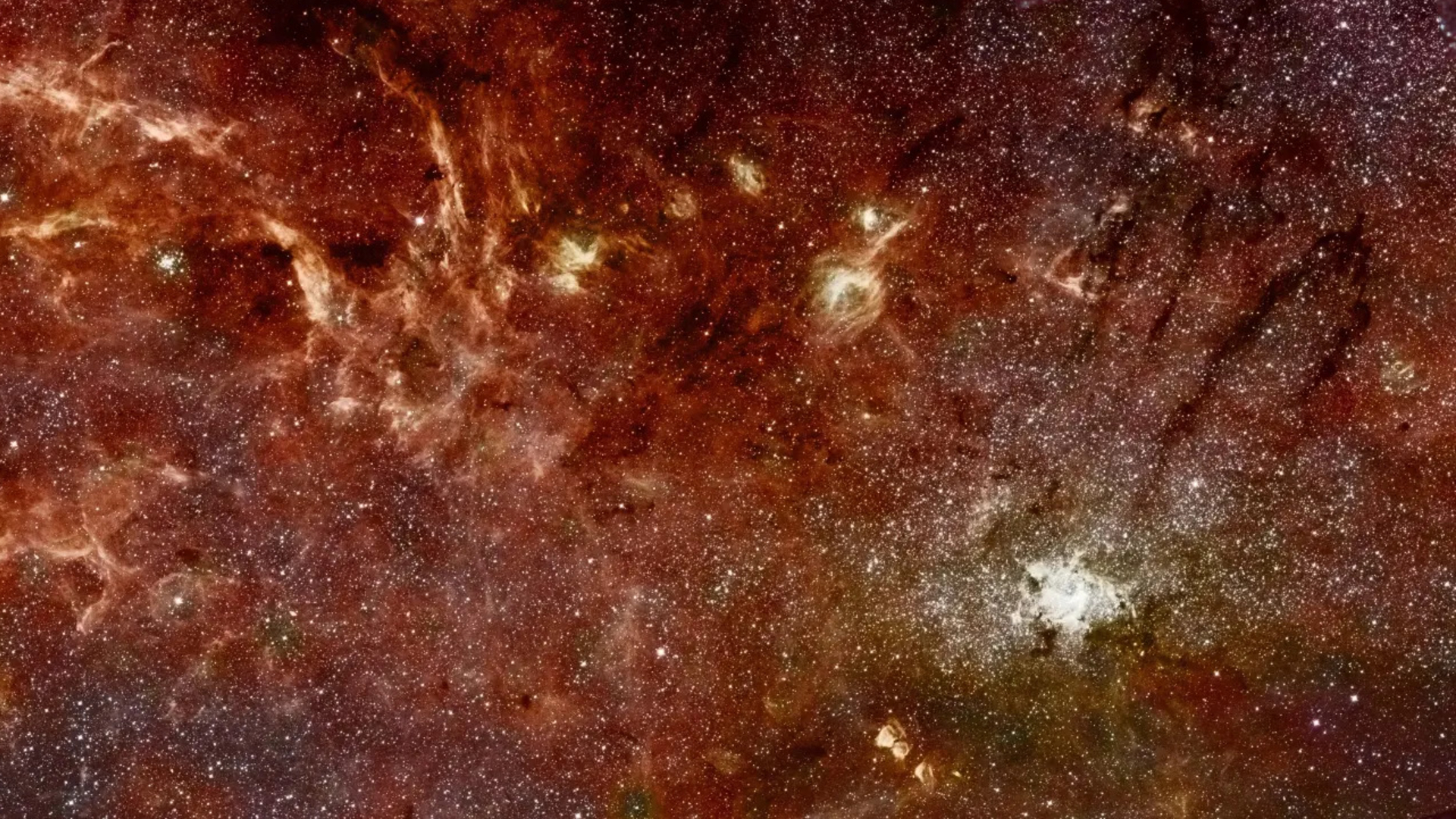A faint glow in the Milky Way could be a dark matter footprint
"It's possible we will see the new data and confirm one theory over the other — or maybe we'll find nothing, in which case it'll be an even greater mystery to resolve."

The century-old mystery of dark matter — the invisible glue thought to hold galaxies together — just got a modern clue.
Scientists say they may be one step closer to confirming the existence of this elusive material, thanks to new simulations suggesting that a faint glow at the center of the Milky Way could be dark matter's long-sought signature.
"It's very hard to actually prove, but it does seem likely," Moorits Muru of the Leibniz Institute for Astrophysics Potsdam in Germany, who led the new study, told Space.com.
Dark matter, which makes up about 27% of the matter in the universe, remains one of the biggest riddles in cosmology. It doesn't absorb or reflect light, making it completely invisible to telescopes. Despite decades of experiments, from underground particle detectors to orbiting space observatories, scientists have never detected it directly. Now, however, new computer simulations from Muru's team may have brought us a step closer to decoding the mystery.
The findings, show that dark matter near the Milky Way's center might not form a perfect sphere as scientists long thought. Instead, it appears flattened, almost egg-shaped, and that shape closely mirrors the pattern of mysterious gamma rays observed by NASA's Fermi Gamma-ray Space Telescope.
This builds on research dating back to 2008, when Fermi first spotted a broad, hazy glow of high-energy light near the galactic core, stretching across some 7,000 light-years. The signal was far brighter than existing models could explain.
Some scientists proposed that these rays could be the by-product of invisible dark matter particles known as WIMPs (short for weakly interacting massive particles) colliding and annihilating one another. Others argued they came from fast-spinning stellar remnants known as millisecond pulsars — ancient, rapidly spinning neutron stars that emit beams of radiation like cosmic lighthouses.
Breaking space news, the latest updates on rocket launches, skywatching events and more!
The pulsar theory made sense because the gamma-ray glow appeared flattened and bulging, much like the Milky Way's star-filled central region. If dark matter were behind the glow, scientists had expected a smoother, rounder pattern.
Muru and his team decided to put both ideas to the test. Using powerful supercomputers, they recreated how the Milky Way formed, including billions of years of violent collisions and mergers with smaller galaxies. Those violent events, the researchers found, left deep "fingerprints" on the way dark matter is distributed in the galactic core.
When this complex history is factored in, the simulated dark matter halo no longer looks spherical. Instead, it takes on a flattened, egg-like form — matching the pattern of gamma-ray emission Fermi has observed, the new study reports.
"We're showing that dark matter also has this flattened shape," Muru said. "So, it does match the [gamma ray] excess much better than expected before."
The finding suggests that dark matter could still be a strong contender behind the Milky Way's mysterious glow. But it doesn't completely rule out pulsars, the researchers say. Both possibilities, the team concludes, are now "essentially indistinguishable."
If the excess truly arises from dark matter collisions, it would mark the first indirect evidence that WIMPs, a leading dark matter candidate, really exist.
Definitive answers could come by the late 2020s, when the Cherenkov Telescope Array Observatory (CTAO) begins scanning the skies from its twin sites in Chile and Spain. The facility will be able to observe gamma rays at much higher resolution than Fermi, researchers say, potentially helping them distinguish between a swarm of pulsars, which have higher energies, and lower-energy annihilating dark matter particles.
Muru added that gamma-ray observations of smaller dwarf galaxies orbiting the Milky Way, whose cores also host dark matter in dense pockets, could further test both possibilities.
"That's where we hope to measure the signal," said Muru. "We're really looking forward to these observations."
Scientists are convinced dark matter is out there. The quest to detect it arguably remains both one of the most frustrating and most exhilarating challenges in modern physics.
"For some reason, it still eludes us," Muru said. "And I think the mystery makes it even more interesting."
The results were detailed in a paper published Oct. 16 in the journal Physical Review Letters.

Sharmila Kuthunur is an independent space journalist based in Bengaluru, India. Her work has also appeared in Scientific American, Science, Astronomy and Live Science, among other publications. She holds a master's degree in journalism from Northeastern University in Boston.
You must confirm your public display name before commenting
Please logout and then login again, you will then be prompted to enter your display name.
